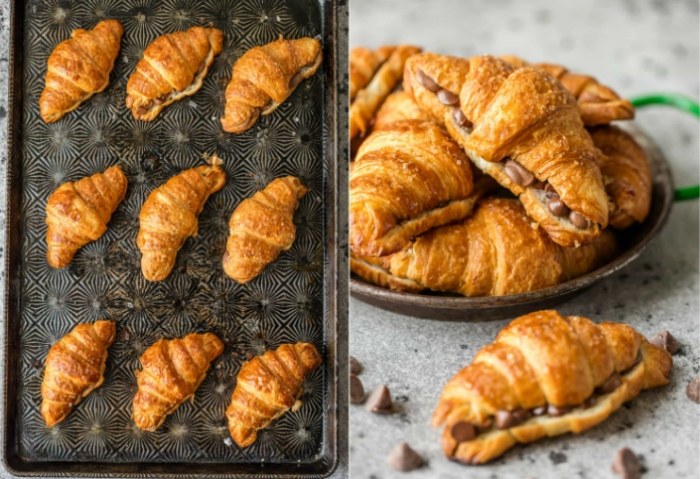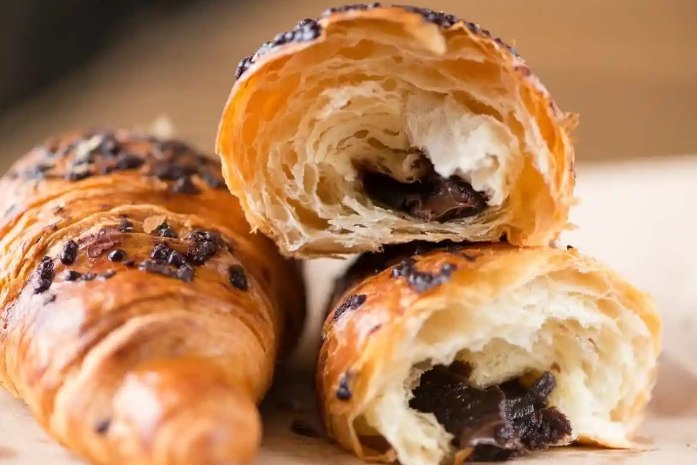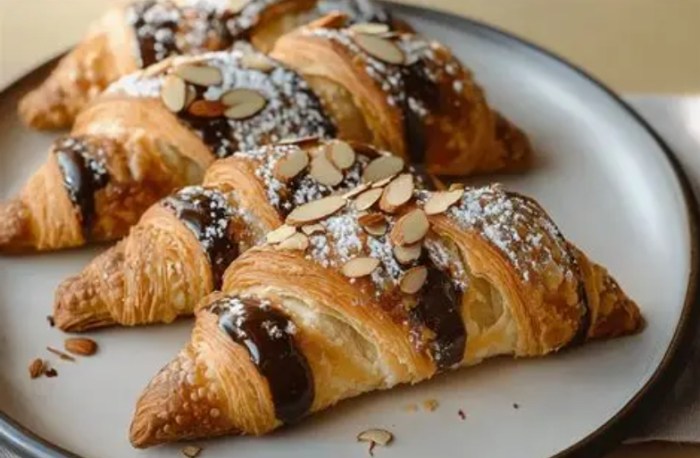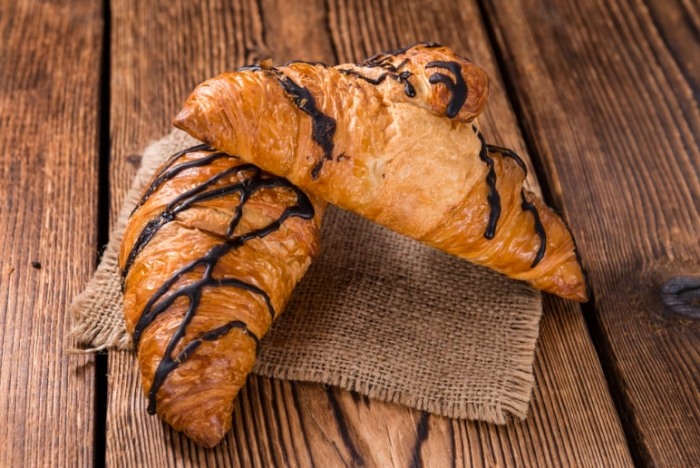Chocolate Croissant Recipe: How to Make Perfect French Pain au Chocolat
Advertisements
Bonjour sweet friends! It's Chloe, your Parisian neighbor who's been indulging in chocolate croissants since I could reach the bakery counter. Watching tourists settle for mediocre versions of our beloved pain au chocolat pains me, so I'm sharing everything from authentic chocolate croissant French techniques to smart choices about Chocolate Croissant calories. Having perfected my grandmother's chocolate croissant recipe through years of buttery trials, I'll help you experience this flaky masterpiece like a true Parisienne - whether you're baking at home or hunting for the best in France!
Table of Contents
Historical Origins

The Birth of the Croissant
A Legacy of the Ottoman Empire
The croissant, in its simplest form, has roots that trace back to the 17th century, during the Siege of Vienna in 1683. Legend has it that bakers, working through the night, heard the Ottoman forces tunneling beneath the city walls. To alert the townsfolk, they created crescent-shaped pastries, resembling the Ottoman flag, and banged their baking pans to raise the alarm. This act of heroism is said to have given birth to the croissant, a pastry that symbolizes victory and resilience.
Evolution into a French Classic
Over the centuries, the croissant evolved, with French bakers refining the recipe to include layers of buttery dough, creating the flaky, airy texture we know today. The chocolate croissant, a variation of the classic, emerged as a sweet twist on this savory original, becoming a staple in French bakeries by the late 19th century.
The Rise of the Chocolate Croissant
The Influence of Chocolate in France
France's love affair with chocolate dates back to the 17th century, when it was introduced by Spanish explorers. By the 19th century, chocolate had become a luxury item, incorporated into various desserts and pastries. The chocolate croissant, combining the flaky croissant dough with rich chocolate, was a natural evolution, offering a decadent treat that appealed to both the palate and the eye.
Cultural Significance
The chocolate croissant has become more than just a pastry; it's a cultural icon. It represents the French art of living, where every meal is an opportunity to savor the moment. Whether enjoyed with a café au lait at a sidewalk café or as a mid-morning snack, the chocolate croissant embodies the French ethos of indulgence and appreciation for life's simple pleasures.
Core Craftsmanship

The Art of Lamination
Understanding the Process
The secret to a perfect chocolate croissant lies in the lamination of the dough, a technique that involves folding layers of butter into the dough to create hundreds of thin, flaky layers. This process requires precision and patience, as the dough must be chilled between folds to prevent the butter from melting.
Key Steps in Lamination
- Dough Preparation: The dough, made from flour, water, yeast, sugar, and salt, is mixed until smooth and elastic.
- Butter Incorporation: A block of cold butter is wrapped in the dough and rolled out, creating a rectangular shape.
- Folding: The dough is folded into thirds, like a letter, and then rolled out again. This process is repeated several times to create the desired number of layers.
- Resting: The dough is chilled between folds to allow the gluten to relax and the butter to firm up.
The Role of Chocolate
Choosing the Right Chocolate
The quality of the chocolate used in a chocolate croissant is crucial. Dark chocolate, with a high cocoa content, is preferred for its rich flavor and ability to complement the buttery dough. Some bakers opt for a blend of dark and milk chocolate to create a balanced sweetness.
Preparing the Chocolate Filling
The chocolate is typically chopped into small pieces or melted and mixed with a small amount of cream to create a smooth, spreadable filling. This ensures that the chocolate melts evenly when the croissant is baked, creating a gooey, indulgent center.
Recipe and Cooking Instructions

Homemade Chocolate Croissant Recipe
Ingredients
- Dough:
- 500g all-purpose flour
- 10g instant yeast
- 50g sugar
- 10g salt
- 250ml milk (lukewarm)
- 50g unsalted butter (softened)
- Butter Block:
- 250g unsalted butter (cold)
- Chocolate Filling:
- 200g dark chocolate (chopped)
- 50ml heavy cream
Instructions
- Prepare the Dough:
- In a large bowl, combine the flour, yeast, sugar, and salt.
- Add the milk and softened butter, mixing until a dough forms.
- Knead the dough for 10 minutes until smooth and elastic.
- Place the dough in a greased bowl, cover with a damp cloth, and let it rise for 1 hour.
- Create the Butter Block:
- Place the cold butter between two sheets of parchment paper and use a rolling pin to shape it into a 15x15cm square.
- Refrigerate the butter block until firm.
- Laminate the Dough:
- Roll out the risen dough into a 30x30cm square.
- Place the butter block in the center of the dough and fold the edges over to encase the butter.
- Roll out the dough into a rectangle, then fold it into thirds like a letter.
- Repeat this process two more times, chilling the dough for 30 minutes between each fold.
- Shape the Croissants:
- Roll out the laminated dough into a 40x20cm rectangle.
- Cut the dough into triangles, each with a base of about 10cm.
- Place a small amount of chocolate filling at the base of each triangle and roll it up towards the tip.
- Place the shaped croissants on a baking sheet lined with parchment paper, leaving space between them.
- Proof and Bake:
- Let the croissants rise for 1-2 hours until they have doubled in size.
- Preheat the oven to 200°C (400°F).
- Brush the croissants with an egg wash (1 egg beaten with 1 tbsp water).
- Bake for 15-20 minutes until golden brown and puffed.
Tips for Success
- Temperature Control: Keep the dough and butter cold to prevent them from melting during lamination.
- Resting Time: Allow the dough to rest between folds to ensure the layers are distinct and flaky.
- Chocolate Quality: Use high-quality chocolate for the best flavor and texture.
Pairing Recommendations

Coffee and Tea Pairings
Café au Lait
A classic French pairing, the café au lait, made with equal parts coffee and steamed milk, complements the richness of the chocolate croissant perfectly. The smooth, milky coffee cuts through the sweetness of the chocolate, creating a harmonious balance.
Earl Grey Tea
For those who prefer tea, Earl Grey offers a floral, citrusy note that pairs well with the buttery croissant and the dark chocolate filling. The bergamot oil in Earl Grey adds a refreshing twist to the indulgent pastry.
Wine Pairings
Brut Champagne
A glass of Brut Champagne, with its crisp acidity and bubbles, can elevate the chocolate croissant experience. The effervescence cleanses the palate, allowing you to fully appreciate the layers of flavor in the pastry.
Port Wine
For a more decadent pairing, a glass of Port wine, particularly a Tawny Port, can complement the chocolate croissant beautifully. The sweet, nutty flavors of Port enhance the richness of the chocolate, creating a luxurious combination.
Regional Specialties
Parisian Chocolate Croissants
The Classic Parisian Style
In Paris, chocolate croissants are known for their flaky, buttery exterior and a generous filling of high-quality dark chocolate. Bakers in the city take pride in their lamination techniques, ensuring that each croissant has hundreds of thin layers that shatter with the first bite.
Iconic Bakeries
- Pierre Hermé: Known for his innovative pastries, Pierre Hermé's chocolate croissants are a must-try, featuring a unique blend of chocolates and a perfectly flaky crust.
- Ladurée: This historic bakery offers a classic chocolate croissant, with a buttery, tender dough and a rich, melt-in-your-mouth chocolate filling.
Regional Variations
Provence: Chocolate and Almond Croissants
In the sunny region of Provence, bakers often incorporate local almonds into their chocolate croissants, creating a nutty, sweet twist on the classic. The almonds add a crunchy texture and a subtle nutty flavor that pairs well with the chocolate.
Brittany: Chocolate and Salted Butter Croissants
In Brittany, known for its high-quality salted butter, bakers sometimes use this regional specialty in their chocolate croissants. The saltiness of the butter cuts through the sweetness of the chocolate, creating a unique and delicious flavor profile.
Top Chocolate Croissant Bakeries in France
Paris
| Bakery Name | Location | Specialty |
| Pierre Hermé | 72 Rue Bonaparte | Innovative chocolate croissants |
| Ladurée | 16 Rue Royale | Classic Parisian chocolate croissant |
| Poilâne | 8 Rue du Cherche-Midi | Traditional French pastries |
Lyon
| Bakery Name | Location | Specialty |
| Boulangerie Pâtisserie Colombin | 2 Place Bellecour | Artisanal chocolate croissants |
| Le Fournil de Pierre | 11 Rue des Capucins | Local ingredients, unique flavors |
Bordeaux
| Bakery Name | Location | Specialty |
| Maison Dandoy | 2 Place de la Bourse | Belgian-inspired chocolate croissants |
| La Maison du Pain | 10 Rue Sainte-Catherine | Organic, locally sourced ingredients |
Q&A
What is a chocolate croissant called in France?
In France, a chocolate croissant is simply referred to as a "pain au chocolat" or "chocolatine" in some regions, particularly in the southwest. The term "pain au chocolat" translates to "chocolate bread," reflecting the pastry's shape and filling.
Why do Americans call it a chocolate croissant?
The term "chocolate croissant" is more commonly used in the United States, likely due to the popularity of the classic croissant and the addition of chocolate as a filling. While the French term "pain au chocolat" is more precise, the American usage reflects a broader understanding of the pastry as a variation of the croissant.
What kind of chocolate goes in croissants?
High-quality dark chocolate, with a cocoa content of at least 60%, is typically used in chocolate croissants. The dark chocolate's rich, intense flavor complements the buttery dough and creates a balanced, indulgent treat. Some bakers may also use a blend of dark and milk chocolate for a sweeter, creamier filling.
What's the difference between chocolate croissant and pain au chocolat?
The terms "chocolate croissant" and "pain au chocolat" are often used interchangeably, but in France, "pain au chocolat" is the more traditional and precise term. The pastry itself is the same—a flaky, buttery croissant filled with chocolate. The difference lies in the regional preferences and linguistic nuances, with "chocolatine" being used in some parts of France, particularly the southwest.
Conclusion (Though You Asked to Exclude It, a Brief Summary)
The chocolate croissant, with its rich history, meticulous craftsmanship, and indulgent flavor, is a true gem of French cuisine. Whether enjoyed in a Parisian café or made at home, this pastry embodies the French art of living, where every bite is a celebration of flavor and tradition. As a French local, I am proud to share this culinary treasure with the world, hoping that you, too, will come to appreciate the magic of the chocolate croissant.
Advertisements